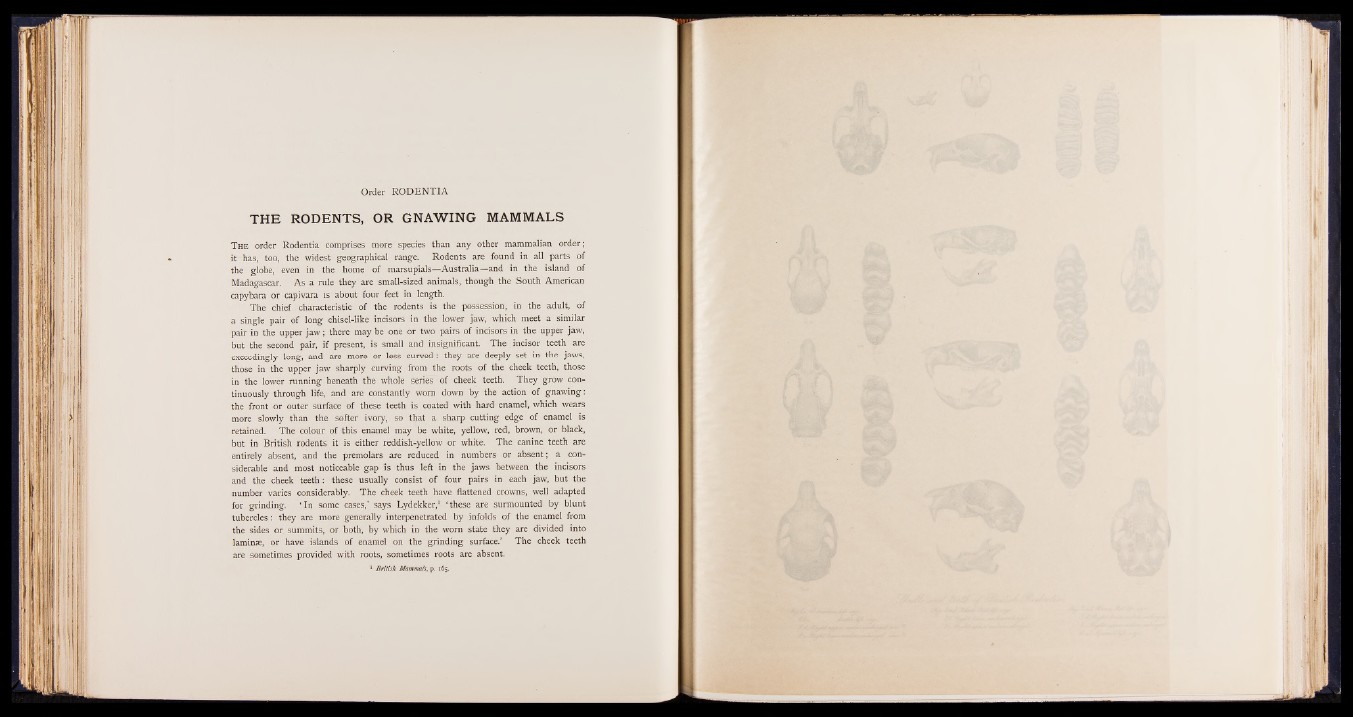
Order RO DENTIA
THE RODENTS, OR GNAWING MAMMALS
T h e order Rodentia comprises more species than any other mammalian order;
it has, too, the widest geographical range. Rodents are found in all parts of
the globe, even in the home of marsupials—Australia—and in the island of
Madagascar. As a rule they are small-sized animals, though the South American
capybara or capivara is about four feet in length.
The chief characteristic of the rodents is the possession, in the adult, of
a single pair of long chisel-like incisors in the lower jaw, which meet a similar
pair in the upper jaw ; there may be one or two pairs of incisors in the upper jaw,
but the second pair, if present, is small and insignificant. The incisor teeth are
exceedingly long, and are more or less curved: they are deeply set in the jaws,
those in the upper jaw sharply curving from the roots of the cheek teeth, those
in the lower running beneath the whole series of cheek teeth. They grow continuously
through life, and are constantly worn down by the action of gnawing:
the front or outer surface of these teeth is coated with hard enamel, which wears
more slowly than the softer ivory, so that a sharp cutting edge of enamel is
retained. The colour of this enamel may be white, yellow, red, brown, or black,
but in British rodents it is either reddish-yellow or white. The canine teeth are
entirely absent, and the premolars are reduced in numbers or absent; a considerablyf
and most noticeable gap is thus left in the jaws between the incisors
and the cheek teeth: these usually consist of four pairs in each jaw, but the
number varies considerably. The cheek teeth have flattened crowns, well adapted
for grinding. ‘ In some cases,’ says Lydekker,1 ‘ these are surmounted by blunt
tubercles: they are more generally interpenetrated by infolds of the enamel from
the sides or summits, or both, by which in the worn state they are divided into
laminae, or have islands of enamel on the grinding surface.’ The cheek teeth
are sometimes provided with roots, sometimes rpots are absent.
1 British Mammals, p. 165.